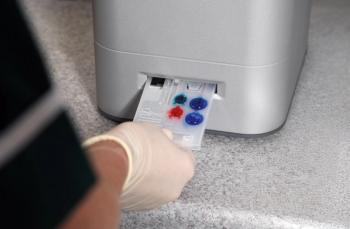
Engineer's stint as veterinary technician reveals 3D printing's value
Custom equipment boosts efficiency and serves patients.
3D printing is the intersection of veterinary medicine and rocket science, and one engineer-turned-entrepreneur wants practices to harness the futuristic technology.
Bret Schaller's wife, Diane K. Schaller, DVM, wanted him to help at her practice in in Sanford, North Carolina, Willow Creek Animal Hospital. Considering his aerospace engineering background, he was tasked with handling everything but medicine. His experience with design and manufacturing proved to be useful as inventory went paperless and large flat-screen monitors and computers showed up in exam rooms.
However, Schaller was recruited to be more involved after employee turnover and a flu outbreak.
“I endured two weeks of ‘Hold this patient,' ‘Put a warming blanket on this patient' and ‘Put the Doppler on this patient,'” Schaller says. “Resistance was indeed futile. I started identifying the need for products that in many cases did not exist.”
The engineer's two-week stint as a “substitute” veterinary assistant inspired him. Schaller used a 3D printer-technology that manufactures objects by building them layer-by-layer based on a digital design-to create custom equipment to address shortcomings he witnessed during the course of normal operations.
The process of attaching the equipment for a patient warmer revealed an opportunity to use the printer. Several fasteners, a gasket and two fittings had to be fastened onto the cage, but they had to be removed for a patient known for chewing.
“That night I was at the computer designing what is now the Heater Holder,” he says.
Using the new holder, the device hooks up in less than 30 seconds. It has benefited patients by increasing the standard of care for postoperative patients, Schaller says. 3D printing continued to prove its value with another device the team could use. The new process is depicted below:
“When I heard the doctor say, ‘Get the cuff syringe. Now. I need it now,' the idea for the Cuff Syringe Holder was born. The plastic piece was designed, printed and placed atop the anesthesia machine,” Schaller says. “I even added space for two syringes just in case the first one didn't get back when the endotracheal tube was inflated. Problem solved.”
Cuff Syringe HolderHis experience demonstrates how a 3D printer can resolve equipment problems without paying for costly parts. He has launched Schaller Industries Inc., a business that sells veterinary products.
“Our 3D printer has quickly become a necessary piece of equipment. The ability to model products using software is a design skill set I brought with me. As 3D printers become more accessible, simpler, less expensive software apps will soon follow,” he says. “Keep watch because at the current pace of technology, in a few shorts many veterinary practices may have 3D printers of their own."
Newsletter
From exam room tips to practice management insights, get trusted veterinary news delivered straight to your inbox—subscribe to dvm360.




